Cusco, Peru (Machu Picchu)
One of the number one things on the entire trip that we have been looking forward to was visiting Machu Picchu. However, two days before we were scheduled to leave, Peru experienced a bit of a political revolution, and for the third time in the last ~year, protesters blocked the tracks of the trains that take passengers to the sacred site. We held hopes that their government would resolve their issues quickly. There is a big backstory here involving power, politics & corruption (go figure) but I will not get into it.
Knowing that Royal Caribbean (RCCL) would not put us in danger, we proceeded with flying to Cusco, the starting point for the bus/train/hike into Machu Picchu.
We were scheduled to spend Sunday visiting the city of Cusco, Monday visiting Machu Picchu, and Tuesday returning to the ship (which continued on, sailing without us).
Arriving in Cusco, there was no signs of any trouble and we proceeded as planned. However, we were told on Sunday night that it was unlikely that we would proceed to Machu Picchu in the morning. RCCL had formulated a backup plan for the day, and shuffled things around for Tuesday, so if anything changed, we could push our flights back and visit Machu Picchu on Tuesday.
Unfortunately, it was not meant to be, and we were unable to visit the actual site.
🙁
We still consider ourselves lucky. One of our fellow travelers has made three trips to Cusco to see Machu Picchu, and she still has not. (Bless her heart.)
So today’s blog will focus on the positive. Here we go.
———————
Yay! We were able to spend several days in the sacred valley! After docking in Pisco, Peru on Saturday, we left for a three-day trip to the city of Cusco. (Pronounced “ku·skow‘.) After meeting with the Customs officials at 6:45am, we made our way to the airport. What a flight. The entire city of Cusco is surrounded by mountains, and the city itself is at 11,000’. (That’s almost twice as high as Los Alamos!)
From the airplane, it felt like we were barely clearing the plush green mountains. And as far as one could see in every direction, it looked exactly like the tiered mountains of Machu Picchu (although the site itself could not actually be seen from the plane). Then the fun part, the landing, which can be described in 3 words. “Fast and steep!”
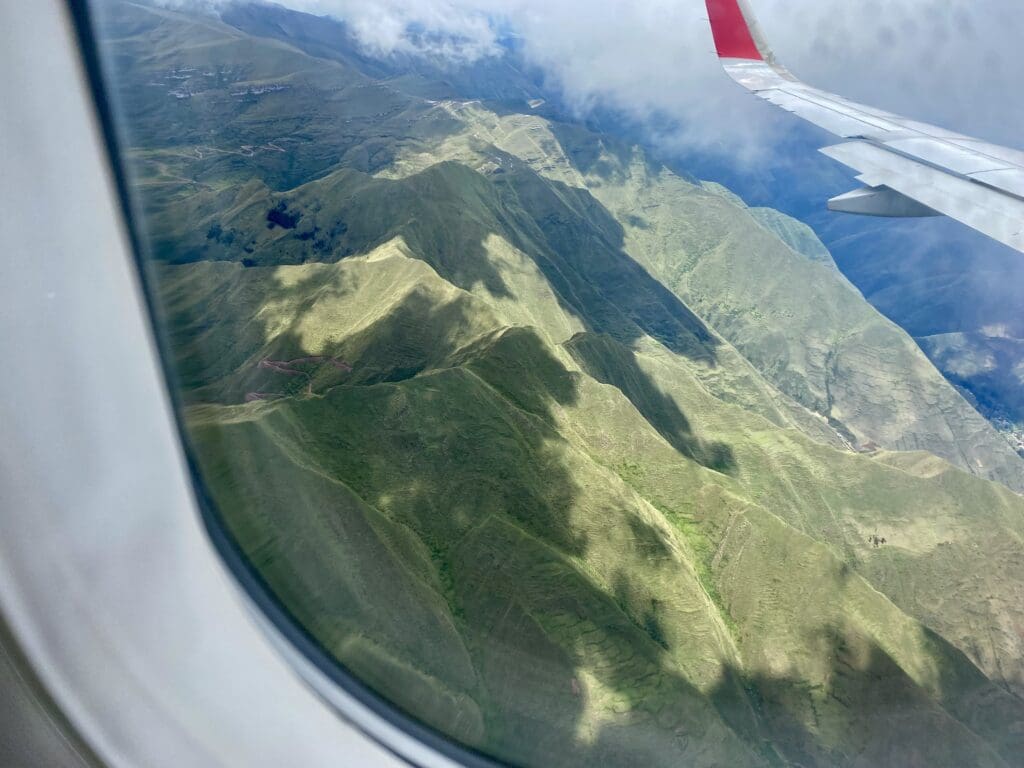
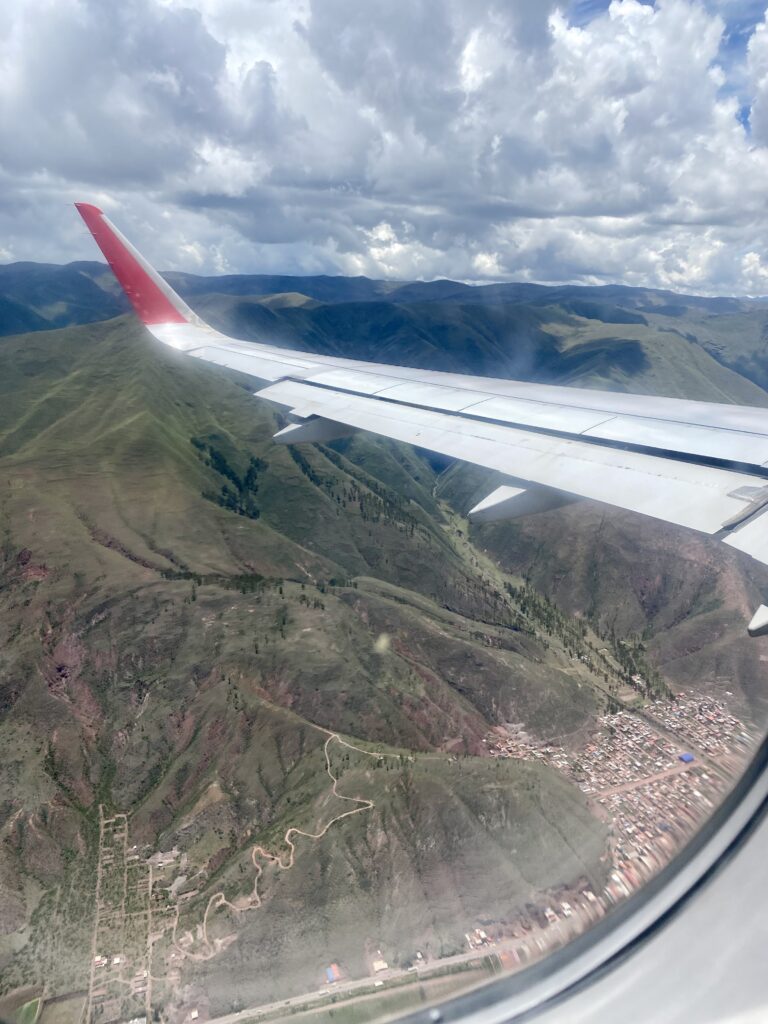
I know I keep saying this, but I really mean it this time. Cusco is my new favorite city. I especially like that the streets are so winding and narrow. Although it took a dozen buses and three commercial jets to get our group of ~500 travelers there, to accommodate the narrow roadways, they broke us up into vans that held a dozen folks each. This will be our travel group for the next 3 days.
Not unlike Rome, Cusco has many ancient historical sites spread out throughout the residential and commercial areas of town. Although, unlike Rome, there are not really any large commercial buildings. Rather, the homes and commercial buildings tend to be older, simple, red-roofed adobe structures. Interestingly, although the population is near 1 million people, there is a very low poverty and crime rate. While (as you would expect) there are plenty of street vendors, I only saw two beggars the entire time that we were in town. The population seems very humble, happy, and religious. This place has an awesome vibe!

Cusco is in the Andes Mountains’ Sacred Valley. There are many ruins to explore in and around the city. In the 1300-1500 hundreds, Cusco was the cultural and religious capital of the Incan empire, which stretched across large portions of five of today’s South American countries. (Peru, Bolivia, Ecuador, Colombia and Chile.) It was the main city where all of the emperors and shamans lived and were buried.
While our luggage magically made its way to our hotel, our first stop was Sacsayhuamán (pronounced, wait for it… “sexy woman”). Widely considered the second most impressive attraction (in the area) after Machu Picchu, this citadel is located in the hills on the outskirts of Cusco. It contains the largest structures built by the Incas.

Built in the 14th and 15th century, Sacsayhuamán (a.k.a. Saqsaywaman” and “Xacxaguaman”) is believed to have been a fortress which was also used for religious ceremonies.
Occupying 7,400 acres, the site’s rolling, lush green hills and valleys are home to herds of roaming alpacas. At 12,000 feet, the site looks down, as far as the eyes can see, at the waves of red-tiled Cusco rooftops.
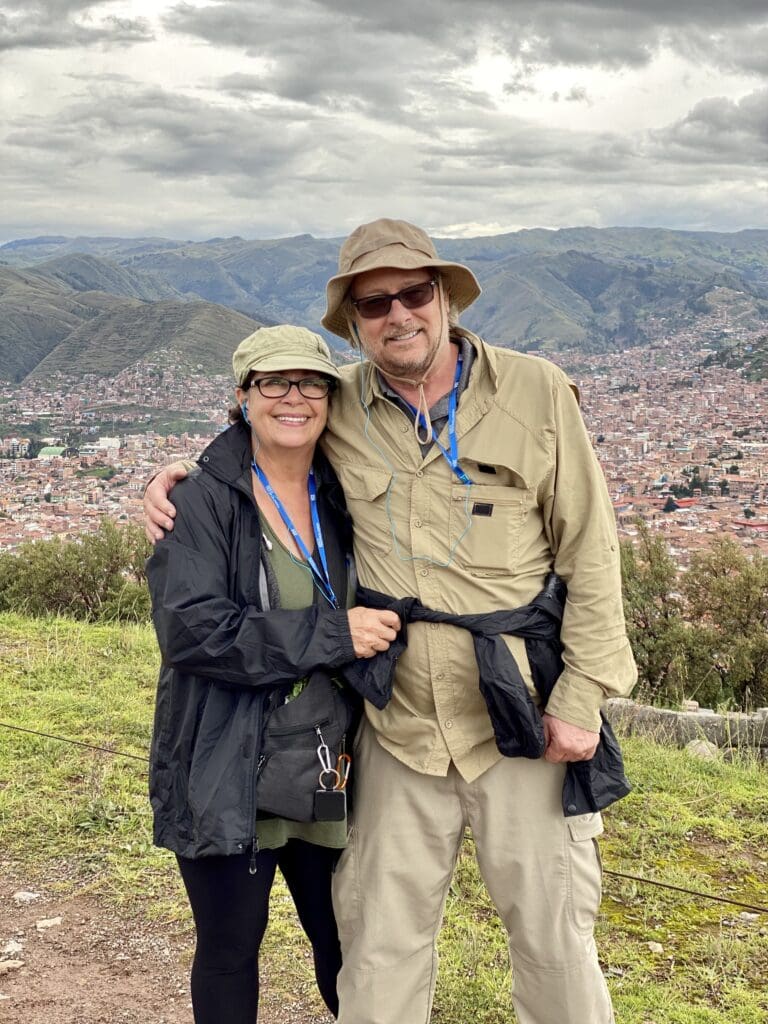
Unusually large stones were used to assemble the walls, staircases, and structures on the site. Many of these stones weigh over 100 tons, and the precision and means used to cut these stones is pretty much inexplicable. They fit together more tightly than any other archeological site in the world. Additionally, the stones are like 3-dimensional Tetris pieces, many with as many as 14 corners.
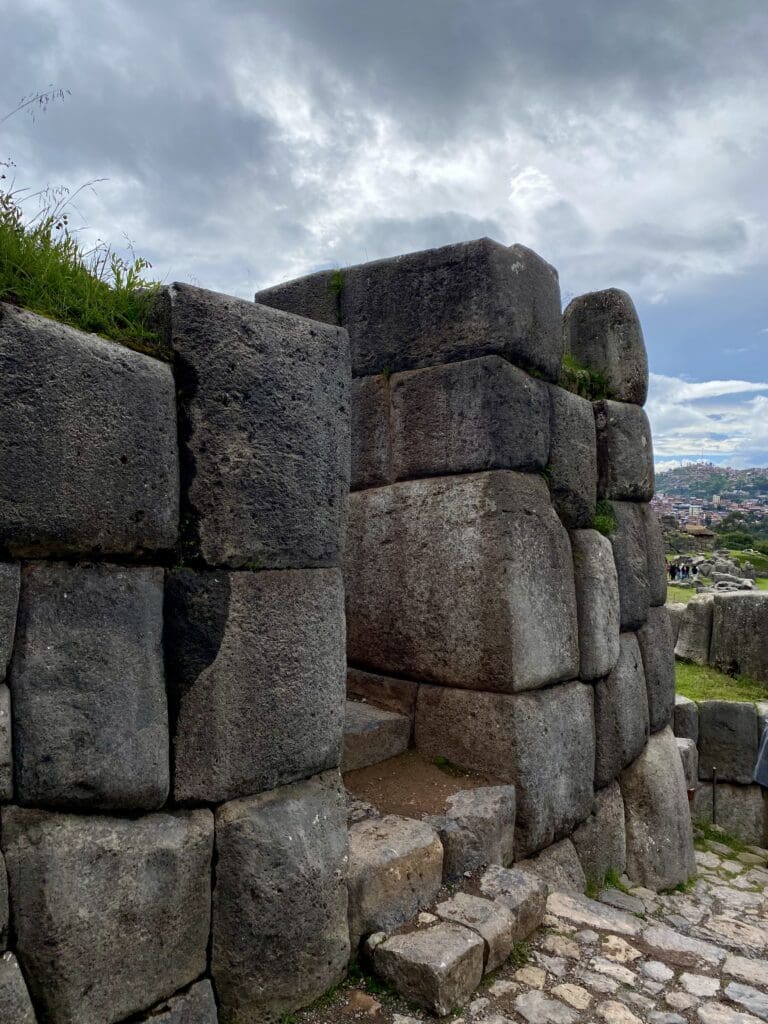

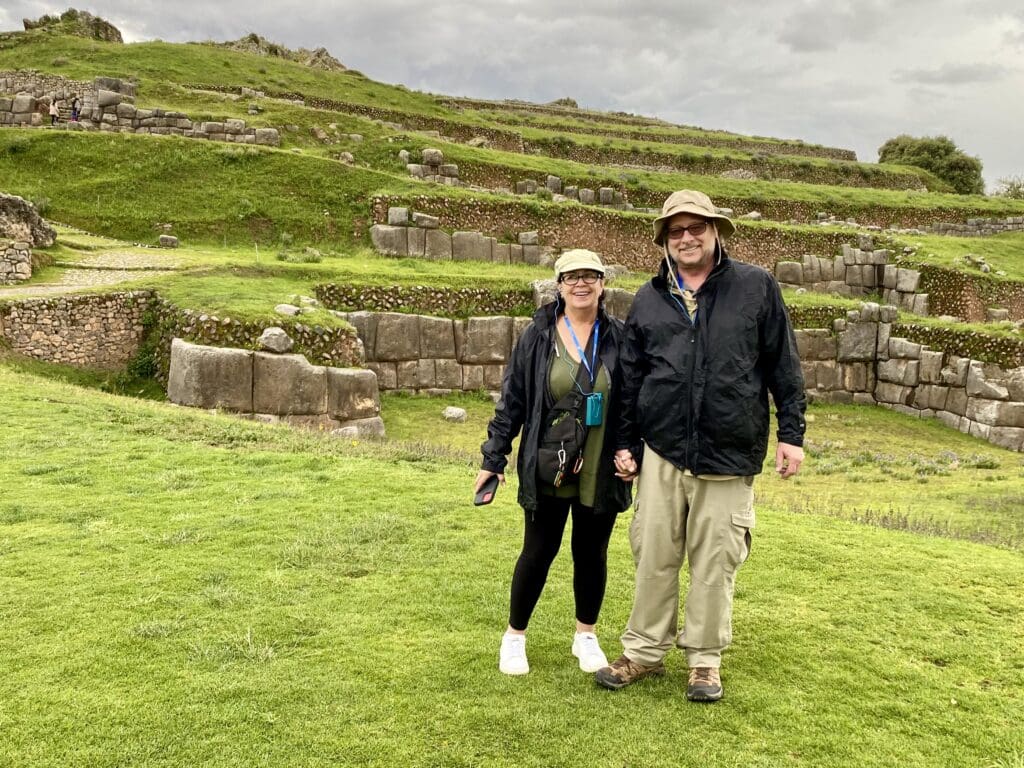
Of special interest was the various internal tongue-and-grove methods used to join the stones. These methods seemed to have changes over the generations. Some even included precision holes bored through the granite stone using some inexplicable means.
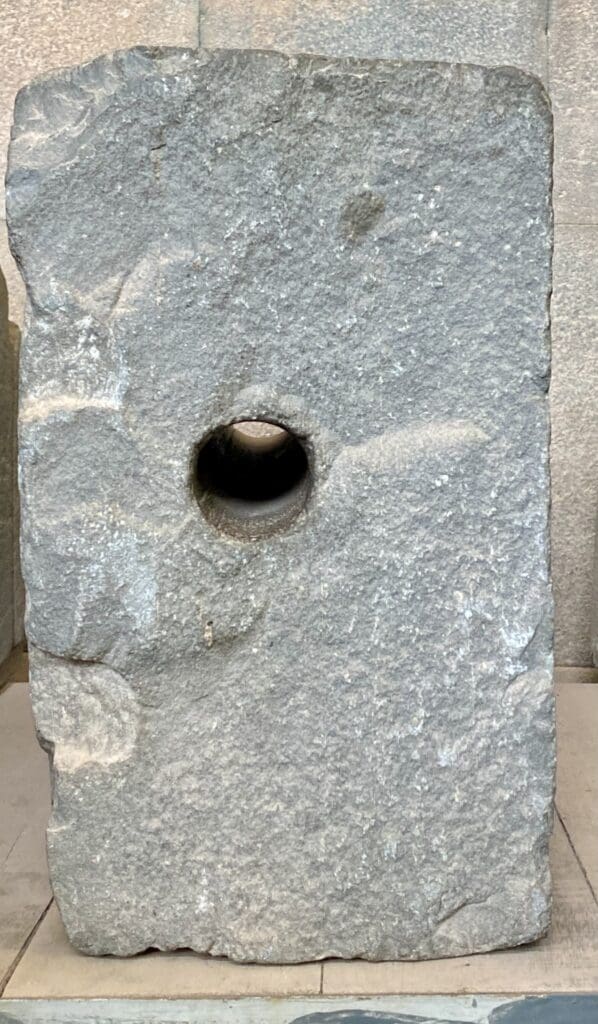
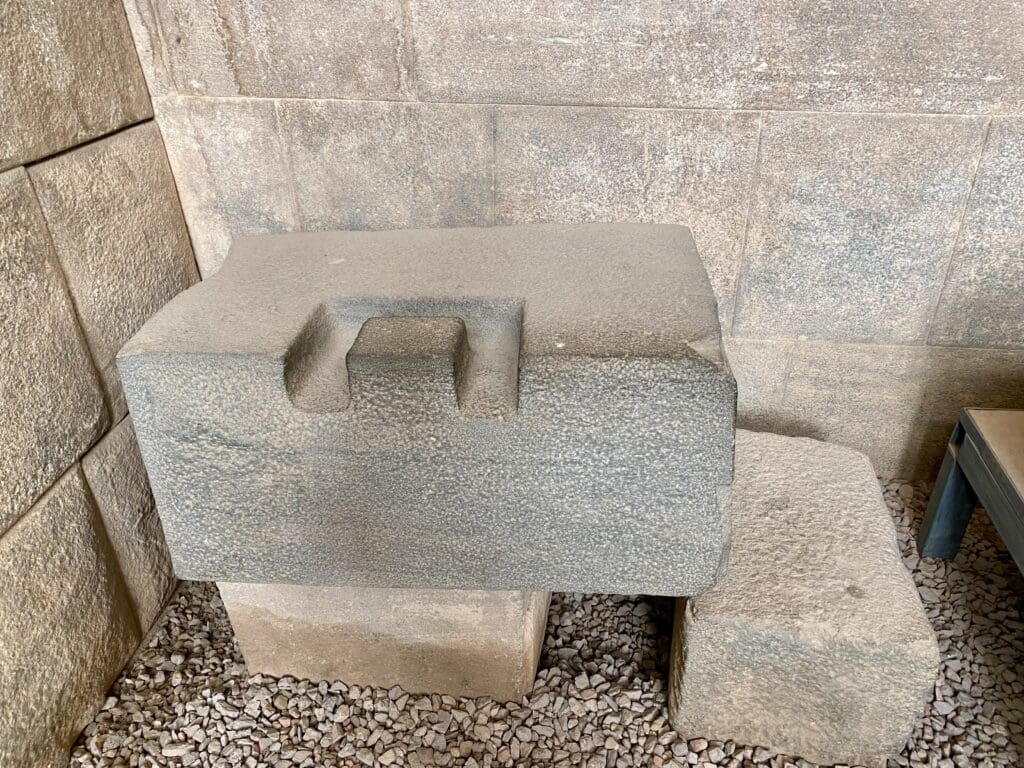
We assumed that the century’s of work required to query, move, sculpt, and place the stones was provided by slave laborers. It turns out that these structures were built by the citizens, who were required to work for two months per year to pay their taxes. (A pretty good deal by today’s standards.)
A couple more quick facts. Although visitors are not allowed in, the site has many complex, humongous underground chambers, as well as tunnel systems stretching for miles to various other ancient religious structures spread throughout Cusco. Also, many of the stones have discernible fist-size nodules carved into the stones. While these are presumed to have been used with levers to place the stones, they also cast shadows that were used as a calendaring system on the walls and floors of the structures. Smart fellers!
Lots more to be said about this wonderful site. A library of awesome photos is available for viewing from iStock. If you want to read more, I recommend visiting the World History Web site (‘cause who knows what you’ll get if you Goggle “Sexy Woman”…).
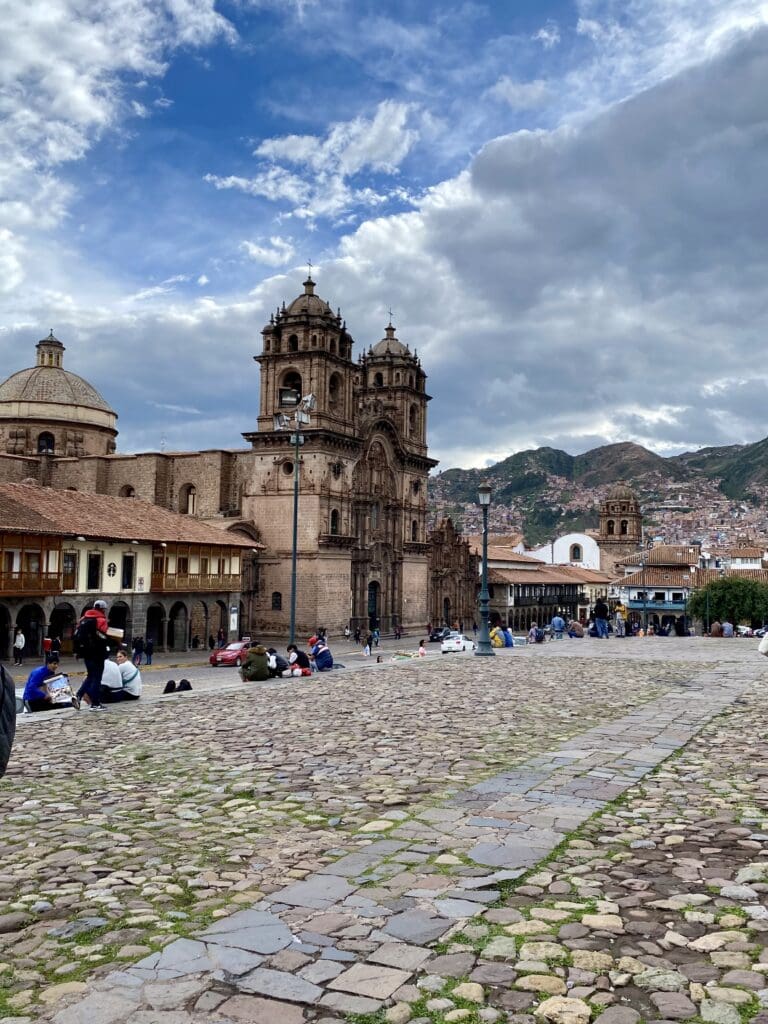
After visiting the Cusco Cathedral, we headed to the hotel. Let me tell you, the JW Marriott El Convento is one of the nicest places that we have ever stayed. It is a converted convent in the city center. Muy bella! (RCCL had every 5 star hotel in town rented to accommodate our 38 vans of travelers. Others indicated their hotels were equally breathtaking.)

Earlier I mentioned the altitude. It turns out that living at nearly 9,000 feet does not mean diddly when you have been at sea level for ~2 months. Our visit to 11-14,000’ took a toll on us. We had headaches, dizziness, fast heart rates, etc.
Two things helped instantly. Marriott pumps pure oxigen into everyone’s rooms, and also provides a nurse (at no charge). Within 5 minutes of asking, a nice fella showed up in our room and read our oxygen level (80!) and put us both in oxygen masks for 7 minutes. Instant relief.
Everything is a bit of a blur after that, but it involved city tours and dinner and a show at the famous Cusco Basilica. Then, early to bed in hopes of a Machu Picchu adventure the following day.
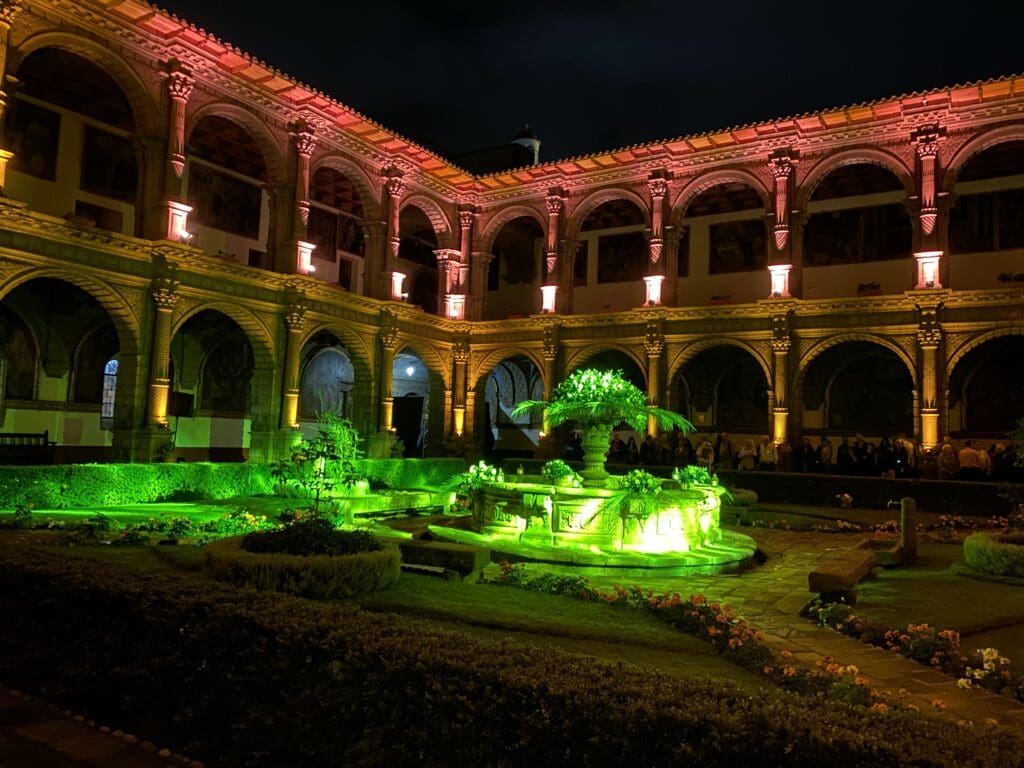
The hotel put on a fabulous breakfast the following morning. First spicy chile we have had since leaving home. Yummo!
It dawns on me that I have failed to mention how a guide is always provided on our excursions. Our Cusco guide was exceptionally informative. Although we were unable to visit Machu Picchu, which is described as “the cherry on top of the Sacred Valley sites”, we enjoyed visiting the fabulous Coricancha, another Inca religious site/museum. Very informative.
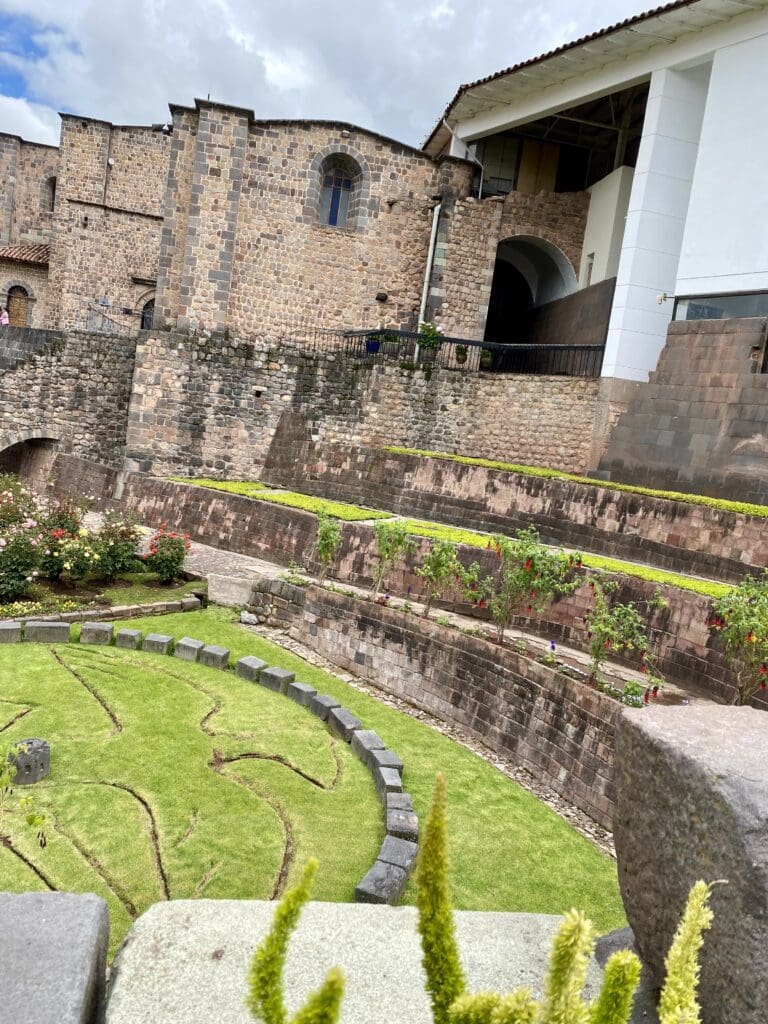
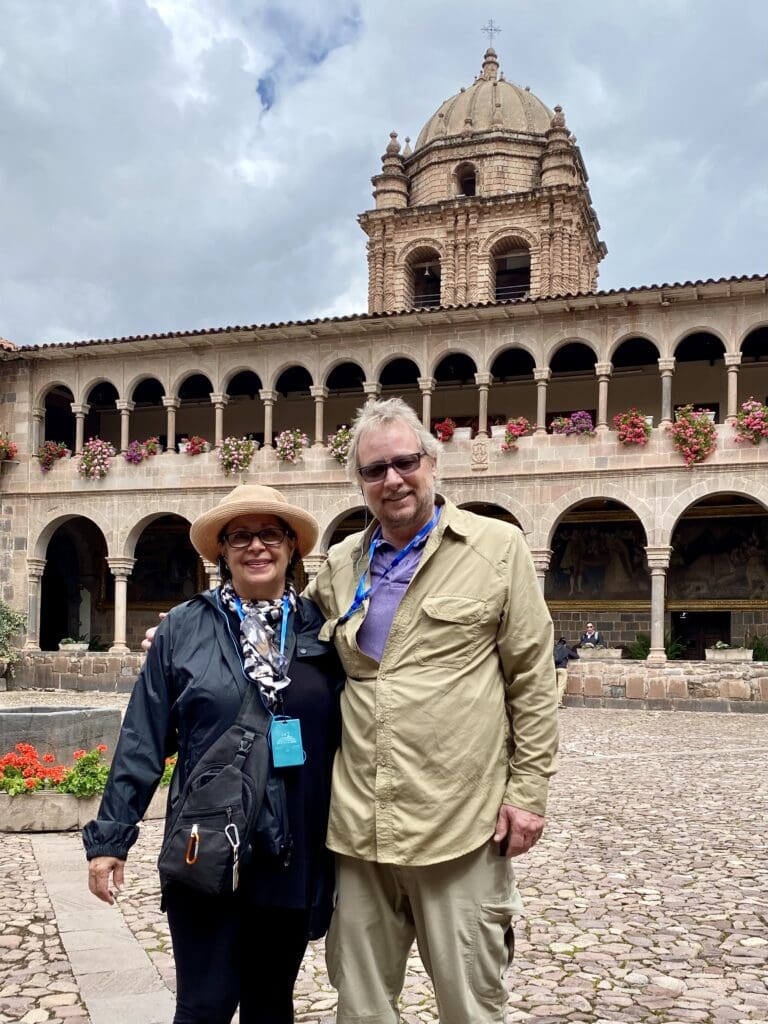
Then, on to Ollantaytambo, the road to Machu Picchu. What a beautiful drive. Eventually, we ended up at the famous Temple of the Sun, the Inca’s sacred place built to honor the Inca Sun God, Inti. This huge structure stretches across an entire mountain, with stone stairs that take ~45 minutes to climb! Beautiful!
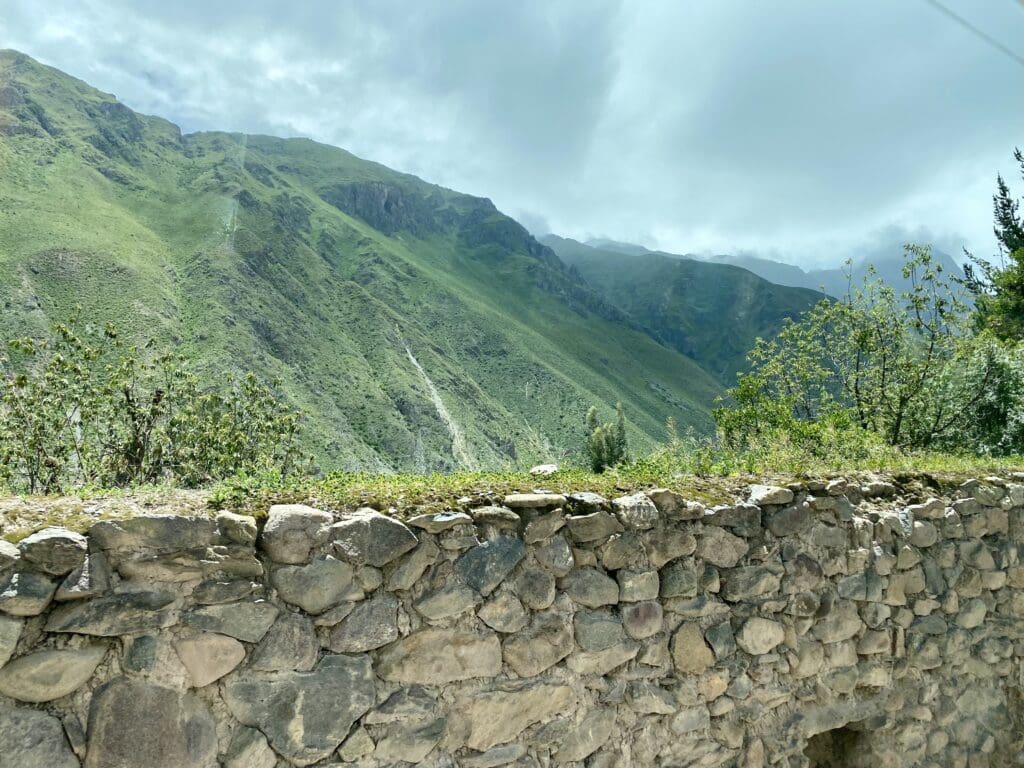
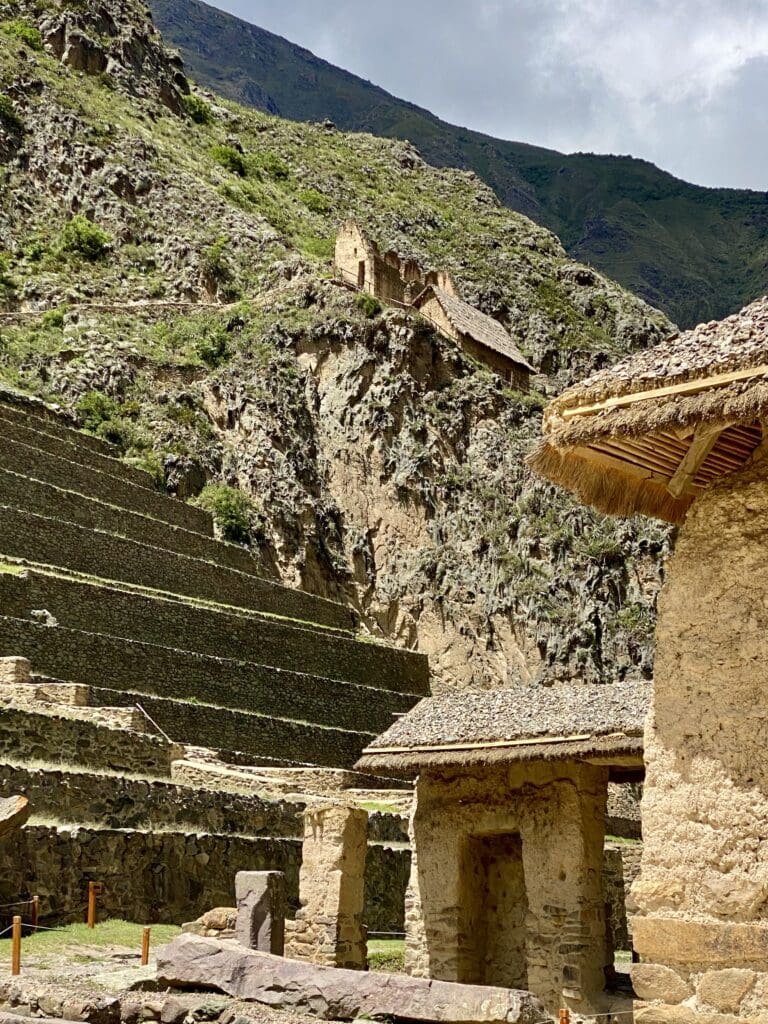
What a workout, but we learned a lot. Only sacred priests were allowed inside the temple at the top, where they drank ceremonial maize beer. The temple is in alignment with the stars overhead in such a way as to provide a calendar. Also, it is aligned in such a way, allowing sunlight to only enter through the sole window during Inti Raymi (the Festival of the Sun).
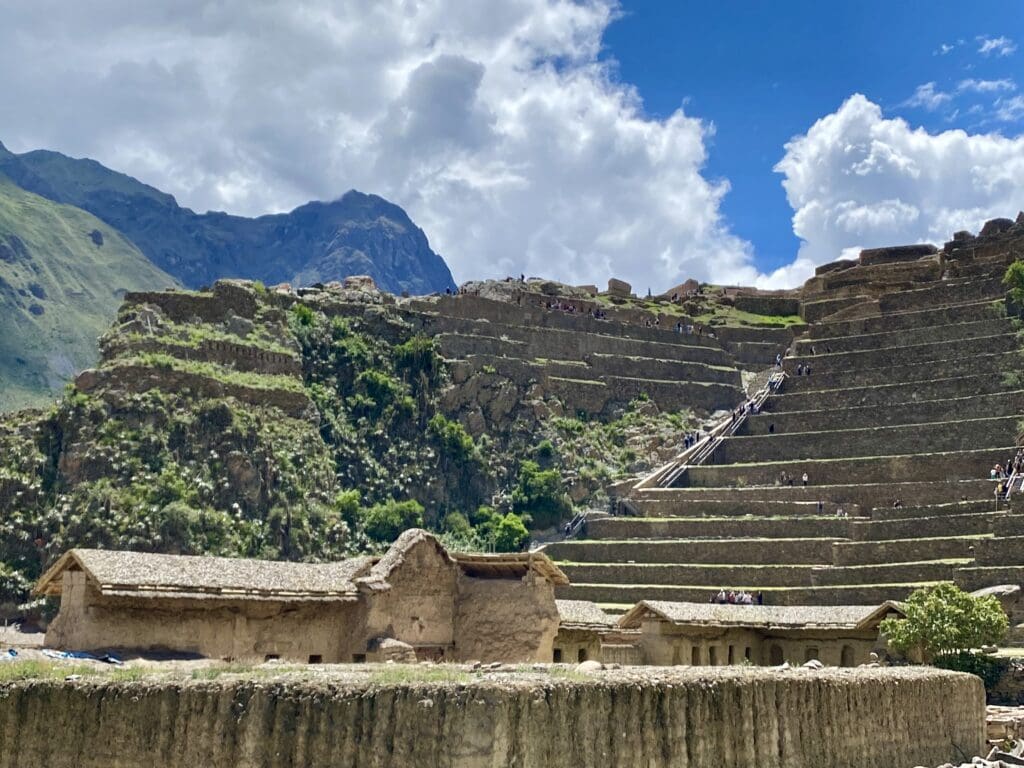
On a side note, maize beer, or chicha de jora, is still made by local residents who live along the road as you drive through the sacred valley. You can see their houses off the road. They have big red trash bags hanging from the eaves of their houses. The bags are used to distill the beer, and also advertise to passersby that the beer is for sale. It is said to be extremely potent!
We especially enjoyed seeing the animals and faces that were carved into the Temple of the Sun’s structures, and learning how they quarried the stones and moved them across the valley, then up to the top of the mountain. The entire area also has aqueducts integrated into the architecture.
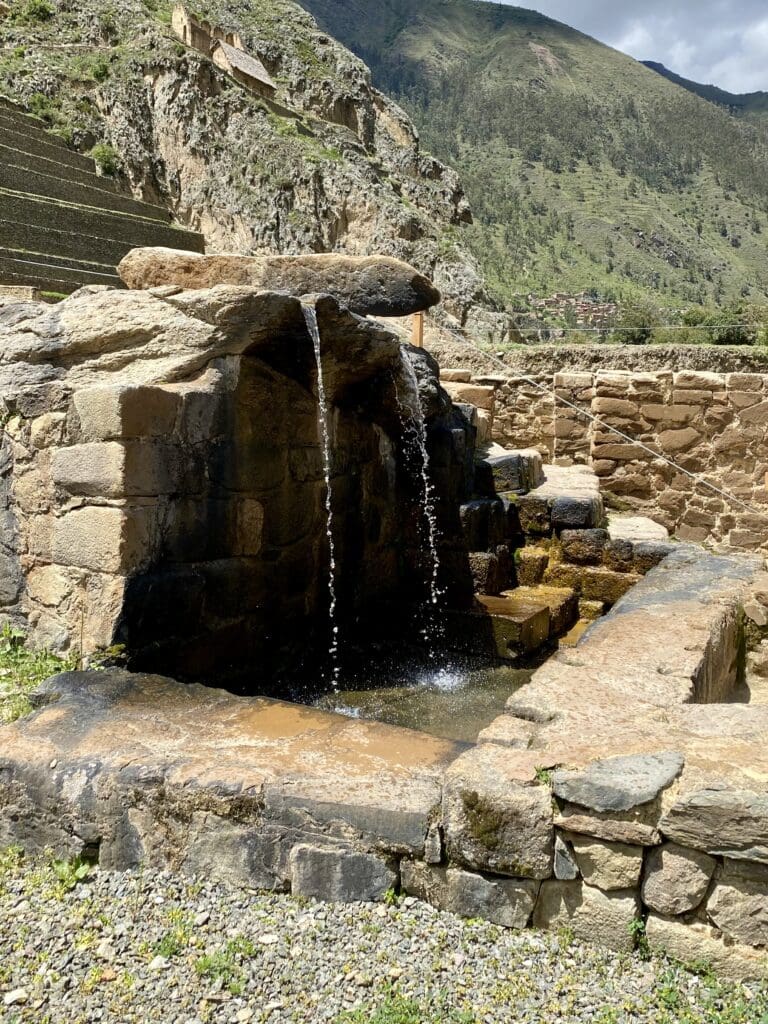
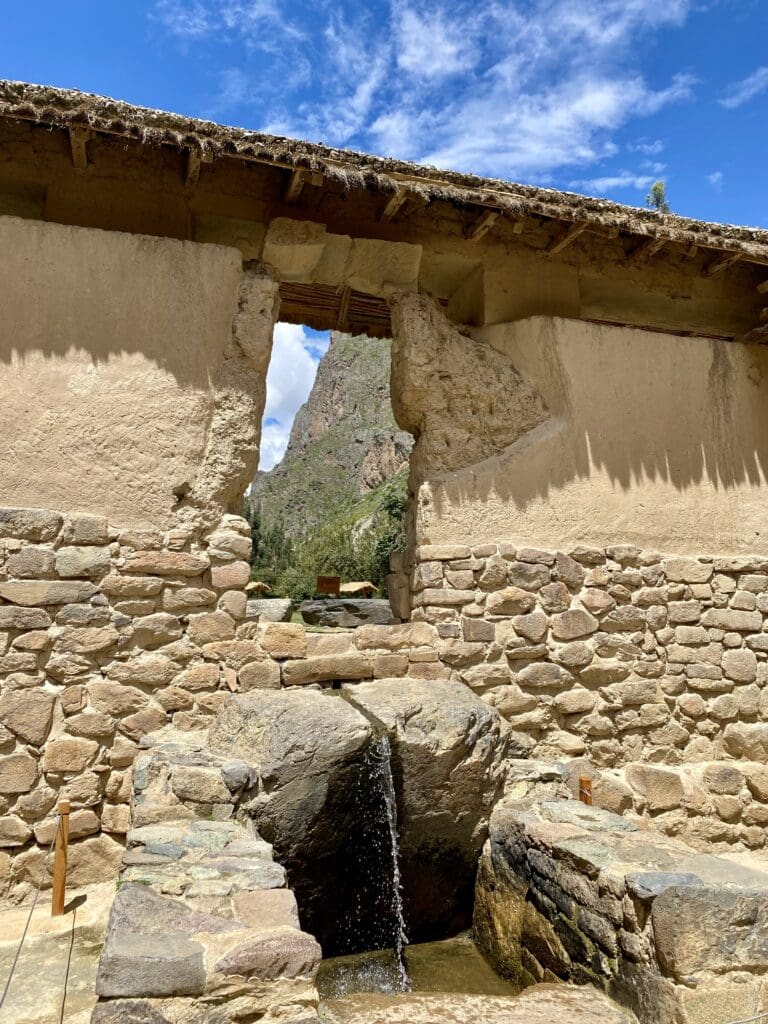
Of course, a cool story accompanied the history of the site. It turns out that in the 1600s the powerful Inca general fell in love with the Inca emperor’s daughter. Although he was not royalty, the couple felt certain that the father would grant them permission to marry, based on all of the riches and territories that the general had captured in the name of the emperor.
However, the emperor denied the request. The angry general appropriated forces and declared war on the emperor. Upon relocating his army to The Temple of the Sun, he eventually defeated the remaining Incan army, and held the location for decades. Eventually, the emperor relented, the couple married, and lived happily ever after. (One big happy family…)
Later in the afternoon, we passed through Ollantaytambo, the jumping off point to transfer from the bus to the train to Machu Picchu. This is the town at the heart of the protests. Although we did not stop, interestingly, we did not see any protesters, and only saw a handful of law enforcement officers. However, we could see the #%&@! Machu Picchu trains! (Pardon my punctuation.)
A bit down the road, several miles off of the highway, we visited (what appeared to be) a private mansion in a clearing carved into the rainforest. We met for lunch with our fellow 500 travelers. Good food and drink, and what a place!
Afterwards, we went in smaller groups down the road to the owner’s riding arena, where they put on a horse show. Really cool specialty horses of some sort. Their gait was unique in that their hoofs appeared to move out to the side as they walked. Different from any other horses that we had seen. Some of the riders danced with a lady in the show. She was barefoot, and they were on horseback. It was really different, and she and the horse seemed to make eye contact while dancing. Pretty cool.
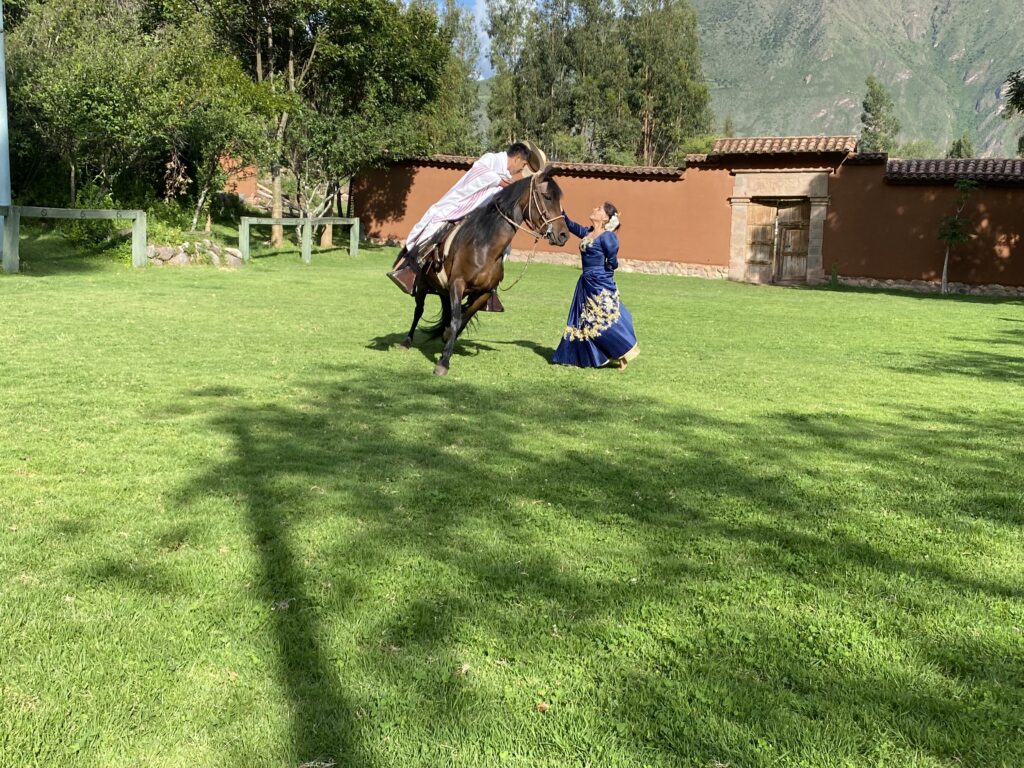
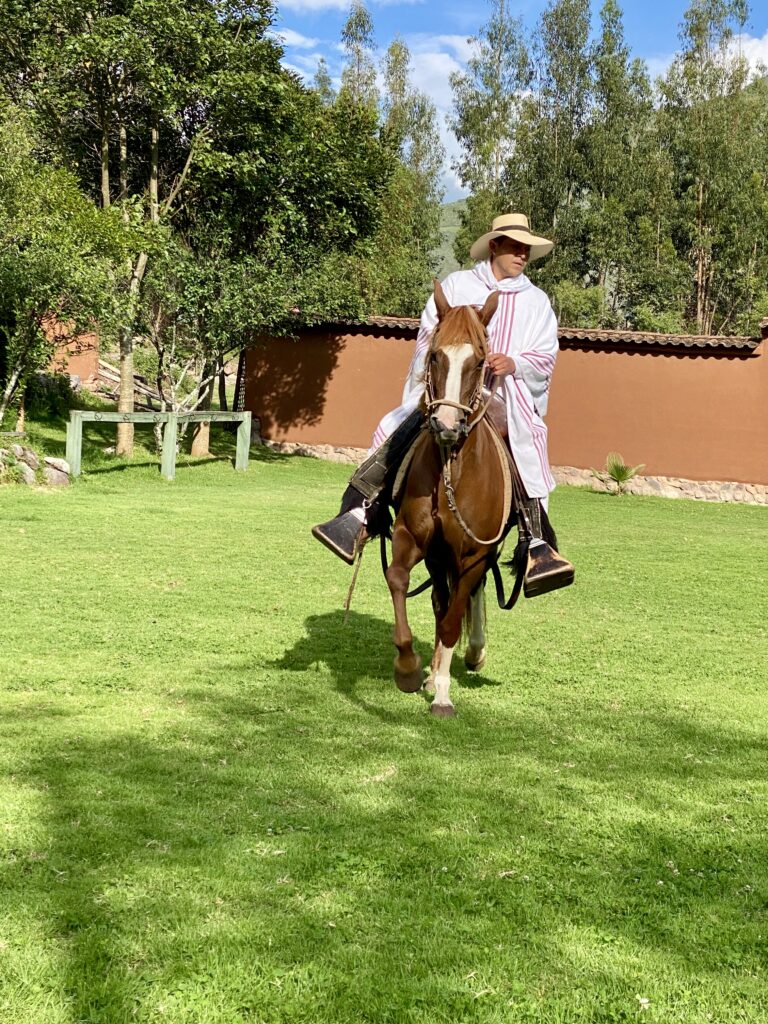
After a beautiful drive back, we had dinner at the hotel, and headed out for a bit of shopping, and a (really good) Pisco Sour at a nearby tavern that credits itself as the Pisco Sour museum. Very informative place to visit, and a fun shopping adventure too.
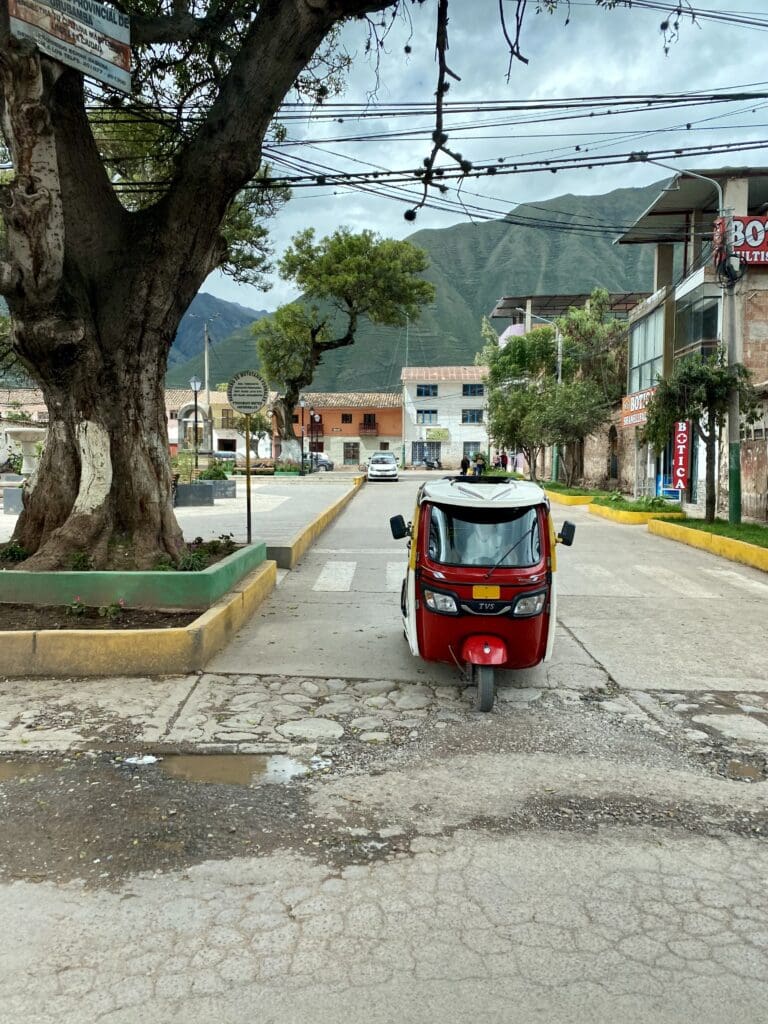

The following morning, we headed to the airport to catch up with the ship in Lima. But that is a different story…
Thank you for reading.
– Mike
“The Sea, once it casts its spell, holds one in its net of wonder forever.”
– Jacques Cousteau

Recent Comments